Let’s continue our Gargano exploration with the chronicle of a day out in the Foresta Umbra, translated as ‘shady forest’, an area of great natural beauty within the Gargano National Park.
For more info on what to do in Gargano, check our post about the Sanctuary of Monte Sant’Angelo!
My family’s memories of Foresta Umbra
I remember hearing tales about the Foresta Umbra as a child. My parents had travelled there in 1977, with their trusty Citroen Diane, camping on the beach out of the back of their car. My parents were (and still are) archaeology buffs, who had met excavating Etruscan ruins in Central Italy.
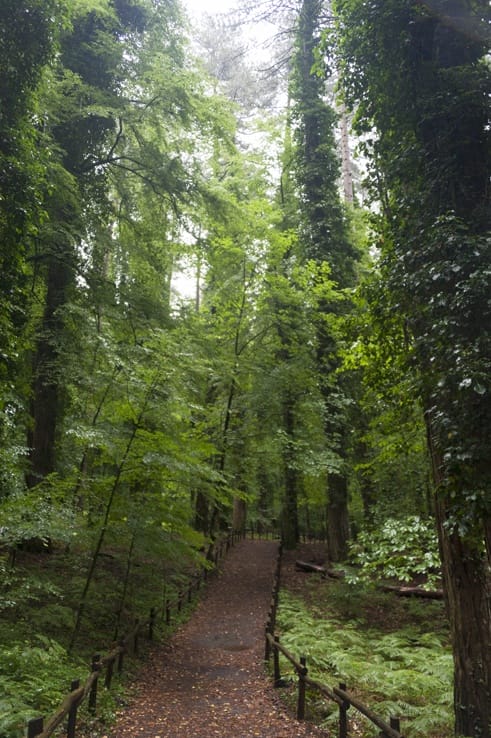
During their trip around Gargano, they decided to visit Foresta Umbra and go on a short trek through the forest. A few hundred meters down the road, and my father’s sharp Indiana Jones eyes spotted a little something on the path. A Neolithic flintstone, polished and amber-coloured, was lying in the middle of a trail. My father couln’t believe his eyes and picked up what, for him, was a treasure. A tiny stone that was put on display into our glass cabinet of ‘precious things’.
I remember my father telling me the story of the flintstone, as a child. How it was used by ‘cavemen’ to clean animals hides, after hunting. The meat would be laid out to dry, and the hides would be used for clothing.
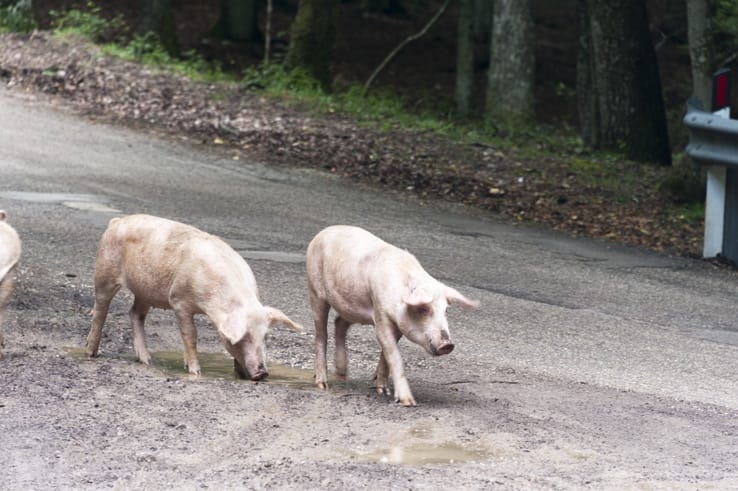
Our Foresta Umbra visit
Fast-forward 37 years. My husband and I are in Gargano, with our trusty (borrowed) Fiat Panda, and when I saw the sign to Foresta Umbra, I knew we had to go.
Foresta Umbra means ‘shady forest’, on account of how dense it is. It is part of the Gargano National Park, a protected area to preserve the great natural diversity of this area, that include sea caves, karst mountains, the Tremiti islands and, of course, the forest.
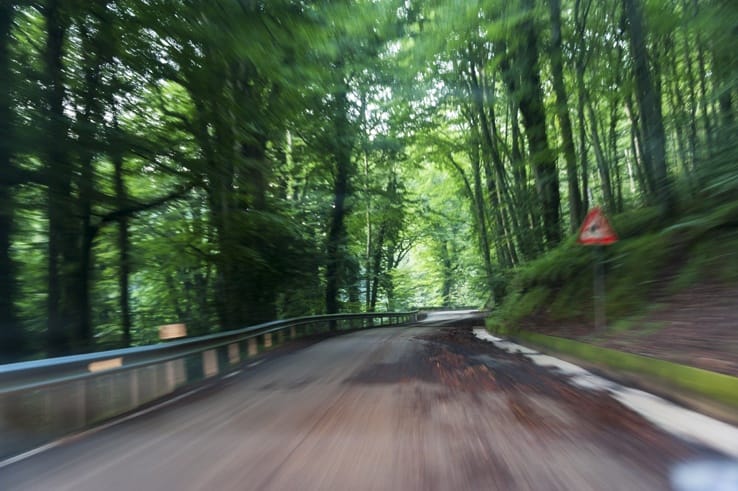
The trail
We began our exploration at Rifugio Sfilzi. Normally, in Italy, the word Rifugio denotes a mountain hut. Rifugio Sfilzi used to be a shelter for shepherds, and is now a small restaurant, shop selling local food and info point for the Foresta Umbra area. We were advised to take one of the walking trails stating from the Rifugio, as they tend to be less frequented by tourists.
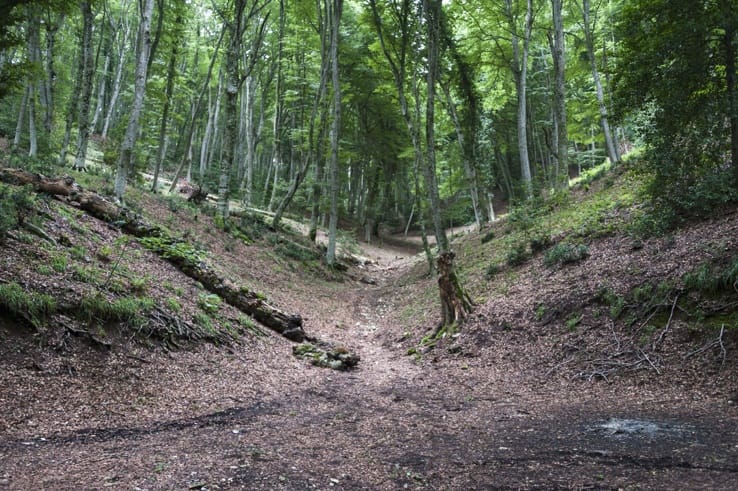
We set off down a wide trail, completely alone, save for the occasional mountain biker zipping by. The path snaked down a gorge, and we could appreciate straight away why the forest got its name. Tall oak trees extended as far as the eye could see, their canopies merging into one another, twenty meters or more above our heads. It was hard to tell what time of the day, and what kind of weather it was.
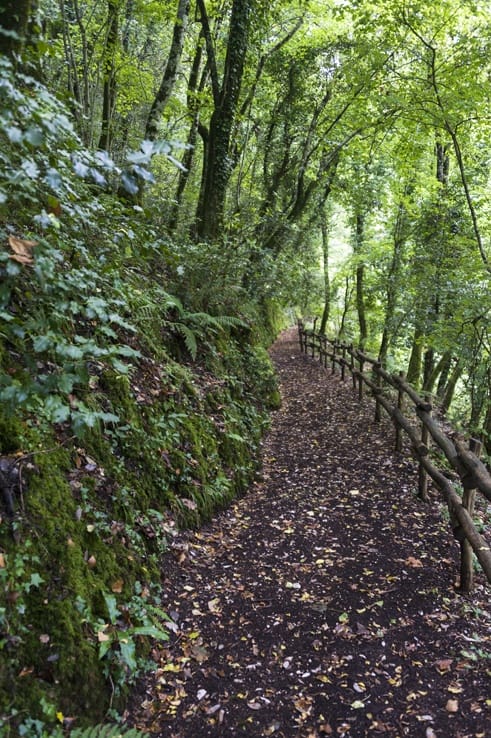
As we made our way down the trail, all we could hear was the sound of ruffled leaves, and birdsong somewhere in the canopy. We had hoped to spot some wildlife, as the forest is home to wild cats, deers, badgers and foxes, but the vegetation was much too thick. Once every now and then, there was the glimpse of black feathers, and a raven would glide past, down into the gorge.
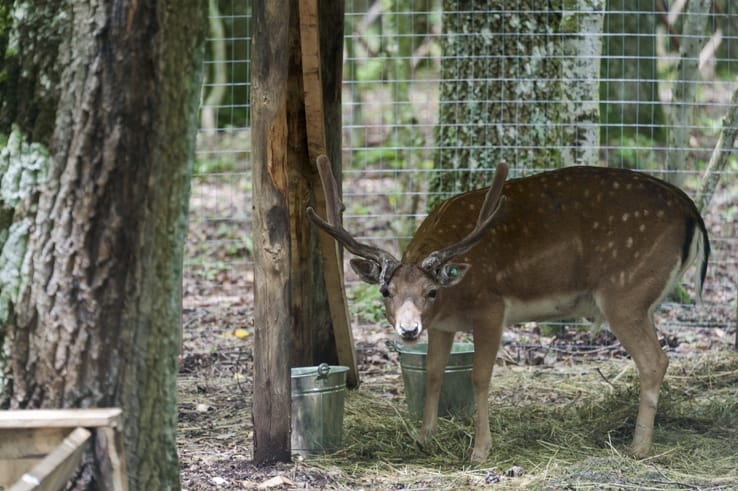
The trail continued for a couple of hours, reaching the bottom of the gorge. The vegetation got thicker and thicker, and what started out as a wide trail became a narrow path snaking past a wooden gate, into the woods.
The path was overgrown with weeds and brambles, but that didn’t stop us. We kept going, following the trail that by then was barely visible, until we reached a beautiful stone fountain. It was the Fontana di Sfilzi, built by hermits during the VIII century BC, and beautifully enveloped by vegetation and covered in moss.
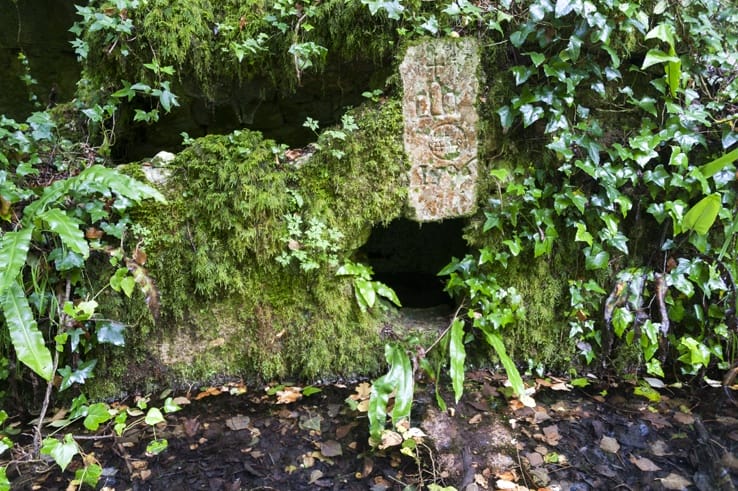
Fontana Sfilzi was supposed to be the destination of our walk, but we pressed on for a bit. We walked over a stream whose bridge had been washed away. It started to rain, but the thick canopy protected us, and all we could hear was the sound of raindrops, like a faint xylophone. The trail continued upwards, by that stage no more than a faint tine through the trees, until it reached a clearing in the forest, and then it stopped.

We walked back, still hoping to spot some wildlife, or find another Neolithic tool. But I don’t have my father’s eyes; and we walked away empty-handed.
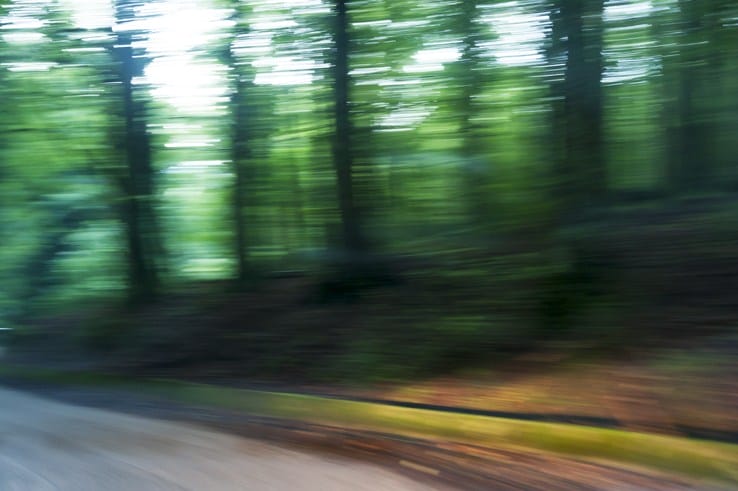
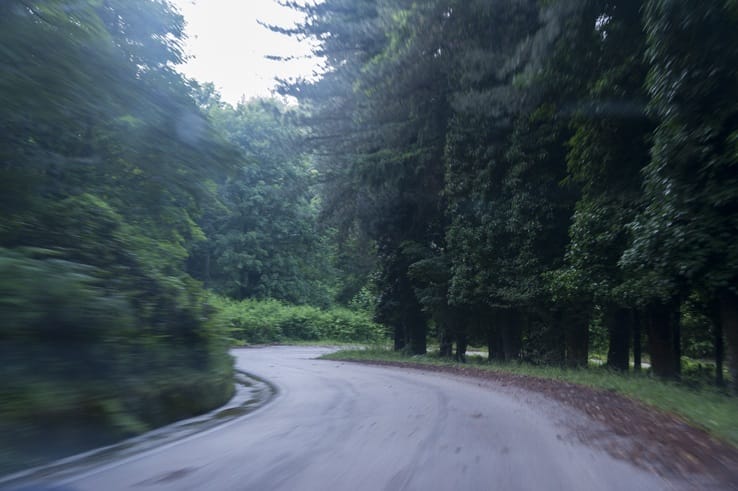

This looks like such a great day out, and such a gorgeous drive! I really love your photographs from the car on the move!
Thanks Meg, glad you liked the post!
That stone fountain is very cool – I can’t believe it dates to the 8th century B.C. and is still preserved in that state. The pictures of Foresta Umbra remind me of the Blue Ridge Mountains in Virginia. By May each year they have a cooling canopy that makes for great hiking just like in this forest.
Hey Dave! Foresta Umbra was such a great place for hikes, so cool and shady. Thanks for your comment!
Great post and pictures. This wood actually reminds me a lot of the one we have at home which can be as dense and green. We don’t get pink piggies though, usually it’s just black swines. But you have to be really lucky to catch them (or better said, you don’t really want to catch them as they can be chasing you haha) …
hey Anto! I’d love to come and see the wood near where you live… and maybe even catch a black pig!
This looks like such a lovely place to “get away” for a bit. And of course, lovely pictures as usual :). The piggies are so cute, and I laughed at that fat deer!
Hey Anna! Glad you liked the post and pics! Funny, I didn’t realise the deer was fat until now!
I’ve never heard of Foresta Umbra but it looks like a beautiful drive! And, any forest with pigs in it…well, count me in!
hahaha so true Ashley, you should go!
Pigs!! That is the last thing I would expect to see in a lush forest-y area! This place sounds like the perfect place for a hike. I really like how you compared the sound of raindrops on the leaves to an xylophone. I can just imagine the pitter patter 🙂 Ahh, so soothing!
The pigs were a nice surprise! Glad you liked the post!
hey Angela! I’m glad the post brought back nice memories. Thanks for stopping by!
Nice to visit a place from which you have find childhood memories! It looks like. Beautiful place to wander- some of your photos actually remind me a little of Canadian forests 🙂